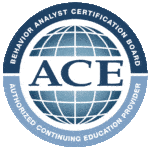All Inclusive Guide to the Special Education Process
Written By: Jules Glowinski, BT
Reviewed by: Melanie Bren, BCBA, LBA

The Special Education process can be overwhelming. It can be confusing and difficult path to traverse. This guide will break down the process into clear stepping stones to help you advocate the best possible education for your child. This guide will help you understand the steps to obtaining an IEP for your child’s education. It will discuss what should be included in the IEP and what steps should be followed under the IDEA (Individuals with Disabilities Education Act) law.
Steps to the Special Education Process
The goal of special education is to provide equal access of education for children up to the age of 21, by providing specialized services that help them find success in the classroom.
1. Identify the Learning Challenge
The first step in this process is determining if your child has a learning difficulty and needs assistance. In most cases, developmental delays or physical disabilities are diagnosed by their pediatrician or another medical provider. If your child was diagnosed before entering the school system, they will enter with special education plans already in place.
Some students will perform well during their early school years and then struggle when the school work becomes more challenging and demanding. If you believe this could be the case for your child, don’t be afraid to ask for help from their teacher or their pediatrician. It is important to remember during this process you are your child’s biggest advocate.
2. Meet with Academic Staff
Even if your child doesn’t have a learning disability, but they are struggling, it warrants a conversation with their teacher. Schools will provide academic assistance or intervention strategies prior to going further with the special education process.
A special education meeting will be held if a parent or the child’s teacher feels its necessary to evaluate the severity of the learning problems. In this meeting parents are advised of their rights and will be asked to sign a formal consent for evaluation. The child and families’ rights are protected under the Individuals with Disabilities Education Act (IDEA). You should know you have the right to bring a support person or advocate with them to this meeting.
3. Special Education Evaluation
The evaluation must assess the child in all areas related to the suspected disability. The results from this evaluation will be used to determine eligibility for special education and related services. If you disagree with the evaluation, you have the right to take your child for an Independent Education Evaluation (IEE). The school can be asked to pay for this new evaluation.
The school has 60 days to complete the evaluation and implement a special education placement, if the child qualifies. If you disagree with the results of the evaluation, you can request an independent educational evaluation at the school’s expense.
4. Qualify for Special Education
After the evaluation, the next step is determining if the child meets the state’s regulatory guidelines for diagnosis with a disability. If your child qualifies for special education, an IEP (individualized education program) meeting is next. If your child does not qualify for special education, continue to find outside resources that will help your child strengthen the skills they struggle on.
5. Determine the Individualized Education Program (IEP)
Developing, discussing, and finalizing the IEP will be the final steps of the special education process. An IEP must include certain information about your child and the educational program designed to meet their unique goals. The information that should be included in the IEP are: current performance, annual goals, special education and related services, participation in state and district-wide tests, dates and places of services, transition service needs, and measuring progress.
Special Education Services
The school district must develop an IEP in 30 days under IDEA. The special education team in your child’s school will assess data and your child’s needs to determine what type of services will help them be successful. These services could include:
- speech therapy
- physical therapy
- occupational therapy
- ABA (Applied Behavior Analysis)
If a recommendation is being made that you don’t understand, ask for clarification. After 15 days your child’s IEP becomes law. So, if there is an area of concern that is not being addressed, be sure to make your concerns clear. Remember you, as the parent, are your child’s biggest advocate and should be the strongest voice for their success.
6. Develop the IEP
The special education team and you will meet to develop the IEP. There may be a draft IEP, but it will not be finalized until the meeting is held and everyone has put their input into the document. The team will use test scores, work samples, and behavioral charts to support their recommendations. Feel free to use this data as well to support your requests.
7. Finalize the IEP
Once an agreement on the content in the IEP is met, the school’s team will finalize the most appropriate placement for the child. Placement could range from a fully inclusive program in the regular classroom to pull out services in a special education program. If the school or you feel that the school can not serve your child’s needs a proposal to outsource to a specialized school can be made.
After the IEP is finalized, everyone who be involved in implementing the IEP must have access to the document. This could include the regular education teacher, special education teacher, related service providers. You will meet with the IEP team annually to discuss your child’s progress. The team will evaluate the effectiveness of the IEP and make modifications as needed.
You can also request a meeting anytime throughout the school year if you feel changes need to be made.
Overview
The special education process can be confusing. Use as many resources as you can including this guide and the resources below. Find other parents who have been in your position through social media groups or mutual acquaintances. If your child has been receiving private services outside the school, the professionals that work with them can be great assets to have when going down this path.
References:
“Evaluating Children to Determine Eligibility for Special Education Services and Reevaluation Requirements.” Learning Disabilities Association of America, https://ldaamerica.org/info/evaluating-children-who-have-been-referred-to-determine-eligibility-for-special-education-services-and-requirements-for-reevaluation/.
“Guide to the Individualized Education Program.” Home, 30 Aug. 2019, https://www2.ed.gov/parents/needs/speced/iepguide/index.html.
Date Posted:
July 12, 2022
Share this blog
Categories
Recent Blog Posts








